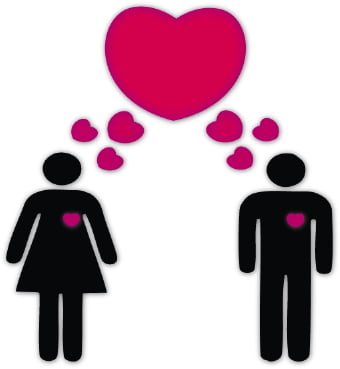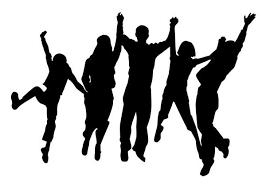Unlocking the Power of Body Language for Effective Communication
Effective communication is more than just words; it's a dynamic interplay of verbal and nonverbal cues. Body language, often underestimated, plays a crucial role in shaping interactions and profoundly influences how our messages are perceived. Mastering body language significantly enhances interpersonal communication, fostering stronger connections and achieving greater success in various settings. This nuanced skill allows for deeper understanding and more impactful interactions, leading to improved personal and professional relationships.
Nonverbal cues frequently reveal more than spoken words. A subtle shift in posture, a fleeting facial expression, or the distance maintained during a conversation – these seemingly minor details can profoundly impact how a message is interpreted. Paying careful attention to these nonverbal signals is essential for accurate interpretation and effective communication, enabling us to navigate complex social dynamics with greater skill and understanding.
Decoding the Silent Signals: Key Components of Body Language
Let's explore the essential elements of body language that significantly impact interpersonal interactions:
- Facial Expressions: A Window to Emotions: The human face is a rich tapestry of emotions. A warm smile conveys approachability, while a furrowed brow might indicate concern or confusion. Understanding and interpreting these expressions cultivates empathy and allows for a more nuanced understanding of another person's perspective, leading to more effective and meaningful communication.
- Posture and Stance: Communicating Confidence and Openness: Our physical posture speaks volumes about our confidence, assertiveness, and openness. An open, relaxed posture often projects confidence and approachability, inviting engagement. Conversely, a slumped posture might suggest insecurity or disinterest. Maintaining good posture is essential for creating a positive and confident impression.
- Eye Contact: The Power of Connection: Often called the "windows to the soul," eye contact is a powerful communication tool. Appropriate eye contact demonstrates attentiveness and engagement; its absence can be misinterpreted as disinterest or even deception. Understanding cultural norms regarding eye contact is crucial for effective communication across diverse backgrounds.
- Gestures and Movements: Enhancing Verbal Communication: Hand gestures and body movements add emphasis and clarity to verbal communication. They enhance the impact of a message, making it more vivid and engaging. However, excessive or distracting gestures can detract from the message's clarity, highlighting the importance of mindful and purposeful movements.
- Proximity and Personal Space: Navigating Physical Boundaries: The physical distance maintained during a conversation significantly influences the interaction's dynamics. Respecting personal space is crucial; invading someone's space can cause discomfort and negative reactions. Maintaining an appropriate distance promotes a comfortable and productive interaction.
- Touch: The Art of Physical Connection: Appropriate touch can convey warmth, empathy, and connection. A gentle touch on the arm or a firm handshake can enhance rapport and build trust. However, cultural norms and individual preferences regarding physical touch must always be respected.
- Silence and Pauses: The Power of Strategic Stillness: Silence, often underestimated, is a potent communication tool. Strategic pauses can emphasize key points, demonstrate active listening, and allow for thoughtful responses. Understanding when and how to use silence enhances communication's impact and demonstrates respect for the other person.
- Mirroring: Building Rapport Through Subtle Reflection: Subtly mirroring the other person's body language can create a sense of rapport and connection. This technique fosters empathy and builds trust, facilitating smoother and more productive conversations. However, mirroring should be subtle and natural to avoid appearing insincere.
- Avoiding Negative Body Language: Projecting Positivity and Engagement: Certain body language cues, such as crossed arms, fidgeting, or avoiding eye contact, project negativity, defensiveness, or disinterest. Consciously adopting positive body language is essential for effective and positive communication.
Navigating Cultural Nuances and Addressing Incongruence
It's crucial to acknowledge that body language interpretations aren't universally consistent. Cultural differences significantly influence the meaning and interpretation of nonverbal cues. What is considered polite in one culture might be offensive in another. Researching and understanding cultural norms is vital for effective cross-cultural communication, preventing misunderstandings and promoting respectful interactions.
Incongruence between verbal and nonverbal communication can lead to confusion and mistrust. When words and body language contradict, the nonverbal message often carries more weight. Ensuring consistency between verbal and nonverbal cues is paramount for clear and trustworthy communication, building credibility and fostering strong relationships.
Mastering Body Language for Enhanced Communication
Body language is a powerful tool that, when mastered, significantly enhances interpersonal communication. By paying close attention to nonverbal cues, both our own and others', we can improve rapport-building, effective message delivery, and stronger relationships. Consistent practice and mindful awareness are key to harnessing the power of body language and using it effectively in all aspects of life.
Developing strong communication skills is an ongoing process of continuous learning and refinement. By incorporating these strategies and remaining mindful of body language's impact, we can unlock its power to create more meaningful and successful interactions, enriching both personal and professional lives.






No comments yet. Be the first to share your thoughts!